|
Oculus Launches “Horizon Workrooms” ... Facebook to become the Metaverse Company ... Part of Our New Series on Digital Accommodation
The way we work is changing. More people are working remotely, more people want flexible work options, and more people are re-thinking what it means to be in an office. But without the right connective tools, remote work still has plenty of challenges. Working without colleagues around can feel isolating at times, and brainstorming with other people just doesn’t feel the same if you’re not in the same room. That’s why Oculus has launched “Horizon Workrooms”. Mark Zuckeberg plans to develop Facebook as a “Metaverse Company”. Workrooms is the flagship collaboration experience that lets people come together to work in the same virtual room, regardless of physical distance. It works across both virtual reality and the web. It is designed to improve a team’s ability to collaborate, communicate, and connect remotely, through the power of Virtual Reality. Teams can get together to brainstorm or whiteboard an idea, work on a document, hear updates, hang out and socialize, or simply have better conversations that flow more naturally. Workrooms brings some of the best new technologies together for the first time into one experience on Quest 2. Using features like mixed-reality desk and keyboard tracking, hand tracking, remote desktop streaming, video conferencing integration, spatial audio, and the new Oculus Avatars, have created a different kind of productivity experience. “We’ve been using Workrooms to collaborate here at Facebook already, and we think it’s one of the best ways to work if you can’t be physically together.” Ark Analyst Nick Grous says “Although it is not a game-changing must-have application yet, Horizon Workshops does provide a glimpse into the future or, at least, Facebook’s hope for the future.” Want to know more? Check out the Oculus web site and our blog post “The Metaverse is Coming” Part of our New Series on Digital Accommodation. Sihn Up for More Updates. The Metaverse is coming, you are in it ready or not ... Oculus https://www.oculus.com/blog/workrooms/ Our Blog https://www.dimensionsofstrategy.com/digital-accommodation/the-metaverse-is-coming Sign Up https://www.dimensionsofstrategy.com/landing-page-digital-accommodation.html #future #metaverse #DigitalAccommodation #facebook
0 Comments
How to future proof your organisation … Digital Accommodation features …
In the June 2021 Podcast, McKinsey focus on how to future proof an organisation in a post covid environment. They identify four macro trends that really inform how organisations have to evolve differently. They are around increasing connectivity, which is really undermining traditional top down power structures and the development of operational structures, which are fluid and agile. We look at the four macro trends and the three identity imperatives need to enforce the vision or mission statement, purpose, methodology and culture discussed in the podcast. Hybrid working including WFH is here to stay. The challenges of onboarding, training, development and culture infusion will never be greater. New software will help including Skillshare (online video training), Thinkific (online course development) and online workplace software like Teamflow. The Megaverse will also feature. Microsoft Teams delivers chat, calls and video. Google offers Workspace, as Facebook develops Workplace. Slack enables collaboration among team members with features including direct messaging, private groups, and channels organized by topic. Software will assist to ensure organisations become flatter. They will help companies develop as learning organisations under a process of constant improvement. The age of the hippo (the dominance of the highest paid persons opinion) is past. Agile and scrum are the new styles of operation. Many of the ideas are not new. In the final section we examine the principals of the McKinsey organisation health index. Many of these concepts relevant today, were outlined in the McKinsey OHI over five years ago. It is the process of digital acceleration which has upped the emphasis on managing change. It is the process of digital accommodation, online and into the cloud, which will enable business leaders to future proof the organisation. Four Macro Trends … 1. Every business must now operate as a technology business. 2. Remote and hybrid operating models are working better than anyone had ever anticipated. 3. Unprecedented automation, developing software and lower transaction costs, enable people to collaborate better outside large organisations than within them. 4. ESG - the role of business in society is changing as a new generation rises. The new generation is driving change. They are expecting to be promoted more quickly to find purpose and meaning in their work. They are willing to vote with their feet and shift organisations, if they don’t get it. Three Identity Imperatives … 1. Purpose - the vision and mission statement guides decisions from the boardroom to the front line. the essence of why we exist is really, really important. Increasingly, we’re seeing that organisations need to take a resonant stance on purpose. 2. Methodology - how is value created, monitored and measured. 3. Culture - How do you run the place? What is the secret sauce? Every organization has a culture. What we are seeing is that many of the leading organizations have a culture that’s distinctly different. It has distinctive elements that are going to draw the kind of talent and capabilities needed to advance what they’re trying to do. “This is about conscious aspiration. Look at the Amazon leadership model. It does not look like something that’s posted on the wall of a traditional corporation. Look at the wonderful document that many, many people will have seen online about Netflix’s culture and how they try to treat each other.” “So examples like that, not only is it about identity, not only is it about an individual feeling like their own purpose is resonant with that of the organization’s but we actually see the company walking the walk and making hard decisions informed by and guided by the purpose.” Flat organisation structures ... "You have organizations devolving into networks of teams or agile teams. Instead of people doing their normal day job, they would show up in a morning huddle and figure out what was the job to be done that day or that week. You figured out who needed to be deployed against it. Those people went off and focused on that. When they were done, they came back. You have teams of teams with the right resources. And you have a fair bit of fluidity in the organizational structure and much more focus on the mission and the outcomes." McKinsey Organisational Health Index 2016 ... Leaders communicate a clear and compelling vision of where the organisation is headed, how to get there and what it means for people. They offer inspiring and cascading values across the organisation that are meaningful for employees. Leaders in the organisation ensure individuals understand what is expected of them, have sufficient authority and feel accountable for delivering results. Leaders consistently measure and manage business and risk and act to address problems when they arise with systems and processes that provide clear operational and financial metrics to monitor and manage performance. Leaders engage with important external stakeholders (customers, suppliers partners) to more effectively create and deliver value both now and in the future. Leaders take a closer look at how the company understands its customers and monitors its competitors. Leaders use effective leadership styles to shape the actions of people in the organisation to drive high performance. People are consulted on the issues that effect them. They are supported in the process of change. Leaders encourage and harness new ideas, including everything from radical innovation to incremental improvement. The company develops as a learning organisation in which knowledge and best practise is shared across the organisation. Leaders ensure the institutional skills and talent are in place to execute the strategy and create competitive advantage. They create a framework which hires great talent, with formal training, development and advancement. Leaders develop employee loyalty and enthusiasm. They inspire people to exert extraordinary effort to perform at their very best. They make it clear how the company motivates employees with financial and non financial rewards, recognition and career advancement opportunities.. Leaders in the organisation cultivate a clear, consistent set of values and working norms that encourage diversity and inclusion and foster effective workplace behaviour. #DigitalDisruption #DigitalAcceleration #DigitalAccommodation #DimensionsofStrategy #TheSaturdayEconomist #JohnAshcroft References : McKinsey Podcast June 17th 2021 Diane Brady, Chris Gagnon, and Elizabeth Mygatt https://www.mckinsey.com/business-functions/organization/our-insights/how-to-future-proof-your-organization In this update we look at the future of retail, The steps apply to businesses more generally and are not confined to retail. Online and into the cloud, the shift on line is permanent. Digitally enhanced multi channel marketing is essential. User experience [UX] and user journey [UJ] must be continually tried and tested under the process of Kaizen, constant improvement. Amazon is setting the standards with one click and next day delivery, by which all others will be judged.
Interaction, including payment must be safe and contactless. The business ethos, practise and operations must be ethical and sustainable. Online and into the cloud, the mantra is cloudy with a chance of brain. AI will feature in the constant improvement of performance. 1. The shift on line is permanent … Online, digital together with home delivered products and experiences are here to stay. Social distancing, working from home and homeschooling have had an impact on what people buy, how they browse and shop for items. It has changed the way buyers want to get products and information. Digital transformation will continue to accelerate to keep up with changing lifestyles. In the UK in January 2020, 19% of sales were made online. Online food sales were limited to just 5% of total sales. In March 2021, online sales accounted for 35% of all transactions. The proportion of food sales online had more than doubled to almost 12%. The shift to online shopping is permanent. Investment in a functional eCommerce strategy is essential. Businesses need an eCommerce platform that customers can rely on when they need it, providing data for all stakeholders that is both trustworthy and timely. Multi channel is key, connecting channels to manage orders that start online but may be fulfilled at the store. As is the case with both click and collect and curb side pick up, seamless communication is needed between online channels and stores. That requires a unified commerce approach which also links to the supply base. It’s all about user experience and user journey. Amazon is setting the standards by which all others will be judged. One click and next day delivery, tough to beat. 2. Interaction must be Safe and Contactless … Yesterday, consumers longed for engaging, all-encompassing, made-just-for-me retail experiences. Today, the best in-store experience is still personalised and engaging but happens at a safe distance. Mobile point of sale terminals, self check outs, scan and go technology, Amazon Go, cashier less stores will feature. Contactless payments are becoming much more important with the adoption of low touch and no touch payments. Cash is trash, the use of mobile wallets and contactless cards, accelerated swiftly during the pandemic. 2020 was the year of acceleration in digital payment. Jamie Dimon of JP Morgan would say "cash is trash". It was a reference to the meagre returns on cash investment. In 2019 cash accounted for almost 30% of total transactions. By the end of 2021, just 10% of transactions are cash based. The proportion will fall to less than 5% within two years. Visa, Mastercard, Paypal, Stripe and Square will continue to reap the harvest of a lower cash yield. 3. Physical retail finds new footing and role … Although eCommerce can’t (yet) replace real-life shopping, the equilibrium has changed. While visiting a store used to be a form of leisure, fear of contagion has tipped the scale towards less frequent, shorter, more intentional shopping trips. Stores have transformed to respond to the new demands. The narrow store with winding aisles packed with products has quickly gone from looking quirky to a health hazard. In the upcoming months stores are expected to change their interiors with a focus on cleanliness, openness and empty space. Many retailers have implemented solutions to simplify contactless pick-up of orders in store. In the Holland & Barrett stores in the UK there are now automated contactless click & collect drawers. Customers can place an order online and pick it up in-store, using a barcode or QR code on their phone. No need to interact with employees, or stand in line. Other locations are becoming “dark stores,” small-size warehouses where online orders are packed for delivery and pickup. Dark stores can be a smart way to use low-traffic store locations, transforming them into fulfillment centres to improve product distribution and speed of delivery of online orders. 4. Business models must be ethical and sustainable … Sustainability has been one of the past years’ most dynamic and fast-growing retail trends. While health and safety concerns temporarily stalled the positive momentum, as soon as the situation evolved, environmental concerns quickly returned on consumers’ agendas. They are once again playing a big role when it comes to how and what people choose to consume. According to research by Accenture, consumers are shopping more mindfully than before the crisis. 64% of consumers polled say they are limiting food waste, 49% are making more sustainable buying choices. 40% are shopping local (both in terms of visiting neighbourhood stores and of buying locally sourced products) more often than before. A study by McKinsey on fashion shopping shows consumers are planning to purchase more durable items, to keep the items they already have for longer, and to repair them if needed to prolong use. [See also our updates in the series Code Red for Humanity and ESG.] 5. Businesses Move Online and into the cloud … The cloud, already on most retailers’ radars and budgets, has quickly become a crucial piece for operational resiliency and business continuity. By moving to a cloud model, retailers can better support the needs of remote workers. Businesses can quickly implement innovative technology. They can use the immense intelligence and analytical capabilities of the cloud to see patterns and predict the future. IT in the cloud, supports collaboration, speeds up decision making, enables actionable insights, simplifies innovation, increases scalability for demand changes and reduces risk of data loss. 6 AI features … Cloudy with a chance of Brain … The cloud has democratised Artificial Intelligence tools (including Machine Learning), making them available to most businesses. Today, you don’t need very deep pockets and an army of analysts to take advantage of AI. As a result intelligence is now shaping the retail experience. On the operations side, AI can help optimise complex logistics issues, from replenishment to staffing, to distribution and fulfilment, increasing access and availability while reducing manual work. It is the interaction with consumers in which the most interesting AI use cases can be seen. Stitch Fix, a fashion rental service, has been using machine learning to analyse each of their customers’ preferences. The algorithm then makes product suggestions, which a (human) stylist double-checks and uses as an inspiration to create a box of highly personalised pieces. When items are returned to Stitch Fix, customers review each piece in terms of size, fit, quality, value, style, and more. This information is then used to enhance the recommendation algorithm, improving both service to the individual customer and general inventory in a continuously effective feedback loop. This combination of learning algorithms, human supervision and actual customer feedback may well become a paradigm of tomorrow’s retail, with personalisation resulting from the collaborative work of experts, machines and consumers. 7. Google Tech and Retail … One of the most promising avenues of future disruption for Alphabet may be retail. The company partnered with a collection of major retailers in 2017, allowing consumers to use a Google Express front-end to shop from stores like Costco, Walmart, and Target. Shopping Actions, which launched in 2018, bridged the gap between the mobile, desktop, and voice versions of the company’s shopping platform, which the company says led to as much as 30% higher cart totals in early tests. Today, Google’s shopping service still can’t beat Amazon on logistics. But the success of one of Alphabet’s other in-progress experiments, the autonomous delivery drone service Wing, could one day be the last-mile solution that connects Google’s online storefront directly to customers and reconfigures the entire retail landscape in the process. [From our update on Alphabet’s next billion dollar businesses] #DigitalDisruption #DigitalAcceleration #DigitalAccommodation #DimensionsofStrategy #TheSaturdayEconomist #JohnAshcroft ———————————————————————————————————-- The update is based on the report by LS Retail, Retail of the future five trends that will redefine the industry. Five emerging trends and technologies that we expect will offer new challenges and opportunities in the months ahead. Who’s afraid of the next retail disruption? In the past few months, retailers have gone through furious, and exceptionally fast, transformation. We have seen well established names in the industry crumble and fall, while more agile players moved swiftly into their space. We have seen light-speed change in consumer behavior, and in the way businesses present, sell, and deliver products. LS Retail is the leading expert in unified business software solutions. For retail, restaurants, pharmacy, gas stations and hospitality. One software platform. Front to back. Alphabet is using its dominance in the search and advertising spaces and its massive size to identify the next billion-dollar business. From healthcare to smart cities to banking, using the CBInsights* Report we look at the twelve industries the tech giant is targeting.
Alphabet is edging its way into industries adjacent to the ones where it has already found success and entering new spaces entirely to find opportunities for disruption. Evidence of Alphabet’s efforts is already showing up in several major industries. In this extract from the CBInsights report, we examine how Alphabet and its subsidiaries are currently working to disrupt twelve major industries, from electronics to healthcare to transportation to banking. 1. Consumer Electronics ... Alphabet’s consumer electronics strategy is being driven by its work in artificial intelligence. Google is building some of its own hardware under the Made by Google line, including the Pixel smartphone, the Chromebook, and the Google Home but the company is doing more important work on hardware-agnostic software products like Google Assistant. Android is the foundation of Google’s work in electronics. It has been the best-selling mobile OS every year since 2011, and today has about a 72% market share in the smartphone market. Google has consistently invested in developing Wear OS to compete with incumbents such as the Apple Watch. It deepened its presence in the wearables space when it acquired Fitbit in January 2021 for $2.2 billion. Online TV. Google’s expansion of the Android operating system also included the Android TV. Android TV succeeded the original Google TV, which was discontinued in June 2014. Google’s growing range of smart-home products has seen considerable investment and remains one of Alphabet’s strongest potential growth opportunities, reflecting heightened consumer interest in smart-home products. Since acquiring Nest Labs for $3.2B in 2014, Google has developed smart-home products that encompass remote monitoring and climate control via smart thermostats, as well as home security devices like cameras and intruder detection systems. Google confirmed its plans for a new range of Nest-branded security cameras in January 2021. The company also plans to further integrate its smart-home services with its fitness tracking products by adding sleep tracking functionality to its Nest Hub devices. Virtual assistants. Since launch, Google Assistant has been rated far more capable and useful than its main competitors, Microsoft’s Cortana and Apple’s Siri. 2. Healthcare ... Alphabet is focusing on partnerships and leveraging machine learning to tackle a wide range of healthcare issues. Alphabet is partnering with major institutions and working on a wide range of solutions to different health problems. DeepMind, AI, Machine Learning and Robotics feature in the plan. Alphabet has run several AI-focused healthcare projects through its DeepMind subsidiary since 2016, including tests to better diagnose breast cancer and eye disease. Calico, a life sciences company that became an Alphabet subsidiary in 2015 and remains one of Alphabet’s closest-guarded secrets, is focusing on how AI can help extend the human lifespan and slow down the ageing process. Through Verily, Alphabet is working on applying technology to a broad array of life sciences issues, with separate projects dedicated to studying diabetes, cancer, wearables, robotic surgery, population health, and pharmaceuticals. 3. Next Gen Computing ... Alphabet is prioritizing quantum computing technology. Google was one of the first massively successful tech companies built entirely on software, but that hasn’t stopped Alphabet from pursuing hardware interests aligned with its long-term ambitions. Alphabet’s primary interest in this space revolves around the unique hardware demands of emerging technologies like artificial intelligence and quantum computing. Alphabet isn’t interested in competing with today’s OEMs to own the hardware market, it’s interested in building the hardware platform for these future technologies. 4. Transportation ... Machine learning and AI are fueling Waymo’s dominance in self-driving tech, though commercialisation is likely still far off. Alphabet’s Waymo has advanced ahead of autonomous driving projects at Apple, Amazon, and Microsoft by a significant margin, and is broadly considered to be the industry leader in autonomous driving technology. Alphabet has leveraged its expertise in machine learning and AI hardware, as well as its massive scale and war chest, to fuel Waymo’s progress. 5. Energy ... Alphabet subsidiaries are looking to renewables to make the conglomerate more energy efficient and extend solutions to the public. The company has been carbon neutral since 2007. Alphabet is currently working on solving its intractable energy consumption challenges — largely driven by Google’s data centers — and then taking what it learns to offer household solutions that could disrupt the renewable energy industry in multiple ways. Alphabet includes a few energy-focused companies under its umbrella, including Dandelion which offers geothermal energy services. 6. Smart Cities ... Sidewalk Labs aims to achieve dominance in the space by offering a comprehensive smart city package. Sidewalk Labs, began in 2015 with the mandate to come up with new kinds of technologies to improve urban life. In the six years since, Sidewalk Labs has become a kind of one-stop shop vendor for smart city technology. Sidewalk Labs is positioning itself to be the dominant smart city vendor in two big ways: by leveraging Alphabet’s resources to make it financially feasible for towns and cities to work with the company, and by using other Alphabet companies to make its smart city offering more comprehensive. 7. Travel ... Google is leveraging its search capabilities in an attempt to disrupt online travel agencies. Some of the most disruptive technology companies of the early 2000s were the online travel agencies (OTAs). Companies like Expedia and Priceline allowed people to bypass traditional travel agents, searching for and booking their own flights, hotels, cruises and rental cars more conveniently and more cheaply than before. The supremacy of OTAs is largely built on the ability to search for your own travel accommodations; today, that’s being challenged by the company that pioneered internet search. Alphabet is angling to disrupt OTAs by building a better search experience, asserting its dominance of the search space in general, and getting its results in front of consumers before companies like Expedia and Priceline (now Bookings Holdings) can. 8. Gaming ... Alphabet wants to change the way people game with Stadia, but the platform hasn’t lived up to its hype thus far. With Stadia, the company is planning one of its biggest entertainment projects yet: leveraging Google’s infrastructural might and its acquisition of YouTube to reinvent the way people game. From bets on VR and streaming to building its own video game console, few tech companies are as intent on bending the future of entertainment towards its own vision as Alphabet. Alphabet has been seriously investing in gaming for a while. In 2015, it launched YouTube Gaming, a version of YouTube (and a Twitch competitor) specifically catered to video game content creators and their viewers. YouTube currently has hundreds of thousands quarterly active gaming streamers. Over the 12 months leading up to September 2018, more than 50B hours of content in total were filmed. Those numbers make YouTube the second-most popular game streaming service behind Twitch. 9. Media ... YouTube TV is battling with Amazon Prime and Hulu to win over cord-cutters. Since Google acquired YouTube in 2006, the streaming site has become the most popular destination for online video. Around 5B videos are reportedly watched on the platform every day. With its live TV and DVR service YouTube TV, Alphabet is trying to leverage YouTube’s dominance in general streaming media and the power of its brand to compete with traditional broadcast TV. 10. Banking ... Google is working to become the gatekeeper between its users and bank services. Despite Google’s recent announcement that it would be launching checking accounts in 2020, its goal in banking appears to be less about becoming a bank and more about acting as the mediator between its millions of users and the services offered by traditional banks. By becoming the conduit through which banks can offer services, Google stands ready to collect a vast amount of valuable data on what services are useful and why. It could then use that data to aggregate demand, similar to the way it approaches hotels and travel searching. Google’s biggest fintech product so far has been Google Pay, formerly Android Pay, which merged with Google Wallet in January 2018. Google Pay was active in 28 countries by the end of 2018, and processed 1B transactions in its first year. Google Pay is now available in 40 countries. 11. Satellite imaging ... Alphabet is moving beyond Maps to offer superior imaging of every inch of the planet’s surface. It’s been 20 years since Google first launched Google Earth. Satellite imaging and geographic information system (GIS) technologies have come a long way during the past 2 decades, and today, Alphabet is applying its vast resources to provide clearer images of our world from space. Alphabet has made significant investments in satellite imaging startups in recent years via its GV investment arm. These investments represent major growth opportunities for Alphabet, particularly as the commercial space travel market matures and barriers to entry become lower. GV acquired a stake in Orbital Insight in 2016. Founded by former Google Books director James Crawford in 2013, Orbital Insight provides imaging services to private entities and governments. Its technology has been used to identify patterns in everything from the health of corn crops to how busy the back-to-school shopping season is likely to be based on vehicle movements in store parking lots. 12. Defense ... Alphabet’s sophisticated AI technologies are powerfully attractive to governments and defense agencies worldwide. As one of the world’s largest technology companies, it’s hardly surprising that Google’s work has been of great interest to the national security and defense communities. Although they have been contentious, projects for the Department of Defense and other government agencies around the world have vast commercial potential for Alphabet. One of Google’s first major moves in the defense space came in 2018 when its AI technology was reportedly used by the Department of Defense to improve the accuracy of unmanned aerial vehicle (UAV) strikes. Specifically, Google’s machine vision technology was used to help analysts make sense of imaging data gathered by the US military’s fleet of more than 1,100 drones. #DigitalDisruption #DigitalAcceleration #DigitalAccommodation #DimensionsofStrategy #TheSaturdayEconomist #JohnAshcroft --------------------------------------------------------------------------------------------------------------------- * Alphabet’s Next Billion-Dollar Business: 12 Industries To Watch CBInsights Research Report June 2021 https://www.cbinsights.com/research/report/industries-disruption-alphabet/ What Are Environmental, Social, and Governance (ESG) Criteria?
Environmental, Social, and Governance (ESG) criteria are a set of standards for a company’s operations. They set a performance benchmark, which may be used as selective investment criteria. Environmental criteria consider how a company performs as a “steward of nature”. Awareness of and engagement with government targets for containing climate change should feature. Social criteria examine how it manages relationships with all stakeholders including employees, suppliers, customers and the communities in which it operates. Diversity and inclusion feature in the task list. Governance deals with a company’s corporate governance standards, including leadership, executive pay, audits, internal controls, transparency, visibility and communication with all stakeholders. Environmental criteria may include a company’s energy use, waste, pollution, natural resource conservation and treatment of animals. The criteria can also be used in evaluating any environmental risks a company might face and how the company is managing those risks. Social criteria examine the company’s business relationships. Does it work with suppliers holding the same standards and values? Does the company donate a percentage of profits to the local community. Does the company encourage employees to perform volunteer work? Do the company’s working conditions show high regard for its employees’ health and safety? Are other stakeholders’ interests taken into account? A commitment to fair pay essential across the company and supplier network. Governance, investors want to know that a company uses accurate and transparent accounting methods and that shareholders are given an opportunity to vote on important issues. They may also want assurances that companies avoid conflicts of interest in their choice of board members. They don't use political contributions to obtain unduly favourable treatment and don't engage in illegal practices. The "Seven Principles of Public Life", honesty, integrity, accountability, leadership, openness, selflessness and objectivity should also apply to those seeking to deliver good corporate governance. #DigitalDisruption #DigitalAcceleration #DigitalAccommodation #DimensionsofStrategy #TheSaturdayEconomist #JohnAshcroft #ESG Sources Used in this article Corporate Finance Institute : What is ESG? https://corporatefinanceinstitute.com/resources/knowledge/other/esg-environmental-social-governance/ Investopedia : What Are ESG Criteria? https://www.investopedia.com/terms/e/environmental-social-and-governance-esg-criteria.asp UK government : The Seven Principles of Public Life https://www.gov.uk/government/publications/the-7-principles-of-public-life It’s a Code Red for Humanity. Human activity is “unequivocally” warming the atmosphere, oceans and land.
The findings of the report from the UN’s intergovernmental panel on climate change (IPCC) are endorsed by 195 governments around the world. Human activity has led to a 1.09C rise in the global surface temperature when comparing the average temperature between 2011 and 2020 to the average between 1850 and 1900. The past five years have been the hottest on record since 1850, the report notes, adding: “Each of the last four decades has been successively warmer than any decade that preceded it since 1850. The report is clear in stating that “observed warming is driven by emissions from human activity”. It warns: “The scale of recent changes across the climate system as a whole and the present state of many aspects of the climate system are unprecedented over many thousands of years.” The evidence is clear that carbon dioxide (CO2) is the main driver of climate change, even as other greenhouse gases and air pollutants also affect the climate. Methane gas is also a significant contributor to global warming. “This report must sound a death knell for coal and fossil fuels before they destroy our planet” said UN Secretary General Antonio Gutterres. Extreme weather … Human activity is leading to an increase in extreme weather all over the world and will lead to an “increasing occurrence of some extreme events unprecedented in the observational record”. “Human-induced climate change is already affecting many weather and climate extremes in every region across the globe,” the report states. “Evidence of observed changes in extremes such as heatwaves, heavy precipitation, droughts, and tropical cyclones, and their attribution to human influence, has strengthened.” The world has been experiencing an increasing number of “hot extremes” and “heavy precipitation events” over the past 70 years, it notes. “It is virtually certain that hot extremes (including heatwaves) have become more frequent and more intense across most land regions since the 1950s, while cold extremes (including cold waves) have become less frequent and less severe, with high confidence that human-induced climate change is the main driver of these changes,” the report notes. “Some recent hot extremes observed over the past decade would have been extremely unlikely to occur without human influence on the climate system.” Scientists also found that the “frequency and intensity” of heavy downpours has increased since the 1950s and states with medium confidence that: “Human-induced climate change has contributed to increases in agricultural and ecological droughts in some regions.” Action needed … Stabilising the climate will require strong, rapid, and sustained reductions in greenhouse gas emissions, and reaching net zero CO2 emissions. Limiting other greenhouse gases and air pollutants, especially methane, could have benefits both for health and the climate. Scientists set out five scenarios, ranging from a best case scenario in which the world reaches net-zero emissions by 2050 and negative emissions thereafter, to a worst case scenario in which global greenhouse gas emissions double by 2050. The best case scenario would require a drastic reduction in the amount of carbon dioxide, methane, nitrous oxide and sulphur dioxide emitted each year. Plans in the UK … The government is committed to expanding the low carbon economy while hitting carbon budgets. On 27 June 2019, the UK government set a legally binding target to achieve net zero greenhouse gas emissions from across the UK economy by 2050. The government is also looking at the best ways to cut carbon emissions from heat during the 2020s. This will mean there is no capacity for continued use of fossil fuels in energy production and transport. The power grid is decarbonising rapidly as renewables begin to take the strain. Developments in energy production will lead to a rapid increase in alternative fuels including wind, tidal, solar and nuclear. Transport is the UK’s largest source of carbon emissions, with most emissions coming from cars. The government aims to reduce emissions by promoting the use of ultra-low or zero-emission cars and creating the infrastructure that will allow people to charge them. In November 2020, the government announced plans to stop the sale of new cars that are powered solely by petrol or diesel by 2030. From 2035, only zero-emission cars can be sold The move away from petrol and diesel vehicles with net zero emissions will continue. The surge in hybrid and electric vehicles will lead to a stimulus in battery development, e-vehicle production and supporting recharge infrastructure. New technology will make available hydrogen powered vehicles and aircraft to the worlds fleet. Carbon capture and storage will offer new methods of mitigating CO2 impact. The Buildings Mission has the objective to at least halve the energy use of all new buildings by 2030. Domestic heating accounts for 10% of UK carbon emissions. There are a variety of technologies with potential to contribute to the transformation necessary including heat networks, heat pumps, hydrogen and biogas. The government plans to ban new gas boiler installations by the mid 2030s. Methane Gas ... The IPCC says reducing methane gas emissions is crucial to slowing global warming. Methane stays in the atmosphere for about ten years before degrading into C02. It is responsible for 25% of global warming. It is produced by farming, coal production and landfill rubbish decay. It is also a byproduct of fracking and poorly managed gas extraction. As the permafrost decays emissions will increase. Pressures will rise on mining, farming and rubbish disposal with greater emphasis on alternative food sources and recycling. Megatrends … Global Warming is one of the key megatrends impacting the world economy. The capacity for disruption as a result of extreme weather events is significant in operations, location planning and supply chain logistics. The challenge of change will generate significant investment opportunities in new industries and the modification of old. Digital Accommodation will improve the prospects for a more rapid improvement. #DigitalDisruption #DigitalAcceleration #DigitalAccommodation #DimensionsofStrategy #TheSaturdayEconomist #JohnAshcroft Cathie Woods of Ark Invest believes in Disruptive Innovation defined as the introduction of a technologically enabled new product or service that potentially changes the way the world works. The company has big positions in Tesla and in crypto.
Ark identifies five primary disruptive innovation platforms underlying the most transformative period in history. Each of these platforms, it is believed, will create multiples trillions of dollars in market cap. over the next decade. The five trends are :- Artificial Intelligence … We believe that artificial intelligence (AI) learning systems will transform not only retail, media and telecom, as did the Internet, but all sectors in the economy, even those previously thought impervious to disruption, notably health care and financial services. Underlying technologies include Neural Networks, Mobile Connected Devices, Cloud Computing, Streaming, and the Internet of Things. Blockchain Technology … With blockchain technology, we believe that more of everything in the world will become money-like: fungible, liquid, and quantified. Every corporation and consumer will likely have to adapt, calling into question the very structure of a corporation. Underlying technologies include Blockchain, Fintech, and Frictionless Value Transfers. Energy Storage .. Declining battery costs should cause an explosion in mobile form factors. These innovations should increase the demand for electrical energy, displacing fossil fuels and reducing not only the vulnerability of grids but also operating expenses and the capital intensity of transmission and distribution. Underlying technologies include: Battery Systems, Electric Vehicles, and Autonomous Mobility. Robotics ... Advances in software and sensors should enable robots to operate alongside humans in all sorts of environments. If their unit costs decline by more than 50% while their capabilities increase, as we anticipate will be the case, robots should transform every business that depends upon physical processes and workflows. Underlying technologies include: Adaptive Robotics, 3D Printing, Drones, and Reusable Rockets. DNA Sequencing ... As the cost to sequence a whole human genome falls precipitously, DNA Sequencing, a test once limited to the research lab, should see widespread clinical adoption and a hundred-fold increase in volumes, transforming health care completely. Underlying technologies include: Sequencing Technology, Gene Editing (i.e., CRISPR), and Immunotherapy. Performance "Ark Innovation fund averages 30–50% per year and made an astonishing 150–200 % gain in the pandemic twelve months of 2020. Ark Invest .... we invest solely in disruptive innovation. https://ark-invest.com/ #DigitalDisruption #DigitalAcceleration #DigitalAccommodation #DimensionsofStrategy #TheSaturdayEconomist #JohnAshcroft In January, McKinsey and Company outlined their ideas on trends that would define 2021 and beyond. We outline the basis of this work. Keywords, Digitisation, artificial intelligence (AI), machine learning, bio engineering, genetic sequencing, computing, data analytics, robotic process automation. The full reference is listed in the footnotes.
Consumer Spending: The return of confidence will unleash a consumer rebound ... Consumer confidence will return, so too will spending. “Revenge Shopping” will sweep through sectors as pent-up demand is unleashed. That has been the experience of all previous economic downturns. One difference, however, is that services have been particularly hard hit this time. The bounce back will therefore likely emphasize those businesses, particularly restaurants and entertainment venues. Leisure travel: will bounce back but business travel will lag ... People who travel for pleasure will want to get back to doing so. That has been the pattern in China. The CEO of one major travel company told us that, beginning in the third quarter of 2020, business was “pretty much back to normal” when referring to growth. But it was a different normal. Domestic travel was surging, but international travel was still depressed given pandemic-related border restrictions and concerns about health and safety. In China as a whole, hotel occupancy and the number of travellers on domestic flights were more than 90 percent of their 2019 levels at the end of August, and over the October Golden Week holiday, more than 600 million Chinese hit the road, around 80 percent of last year’s figure. Innovation: The crisis sparks a wave of innovation and a generation of entrepreneurs ... During the COVID-19 crisis, one area that has seen tremendous growth is digitization, meaning everything from online customer service to remote working to supply-chain reinvention to the use of artificial intelligence (AI) and machine learning to improve operations. Healthcare, too, has changed substantially, with telehealth and biopharma coming into their own. Disruption creates space for entrepreneur and that’s what is happening in the United States. In the third quarter of 2020 alone, there were more than 1.5 million new-business applications in the United States, almost double the figure for the same period in 2019. Digitally enabled productivity gains will accelerate the Fourth Industrial Revolution The great acceleration in the use of technology, digitization, and new forms of working will be sustained. Many executives reported they moved 20 to 25 times faster than they thought possible on things like building supply-chain redundancies, improving data security, and increasing the use of advanced technologies in operations. The COVID-19 crisis has sped up the transition in areas such as AI and digitization by several years. The pandemic has created an imperative for companies to reconfigure their operations an opportunity to transform them. To the extent that they do so, greater productivity will follow. Online shopping is here to stay … Pandemic-induced changes in shopping behavior have forever altered consumer businesses. In nine of 13 major countries surveyed by McKinsey, at least two-thirds of consumers say they have tried new kinds of shopping. In all countries, 65 percent or more say they intend to continue to do so. Brands that haven’t figured out how to reach consumers in new ways had better catch up, or they will be left behind. The shift to online retail is real, and much of it will stick. In the United States, the penetration of e-commerce was forecast in 2019 to reach 24 percent by 2024; by July 2020, it had hit 33 percent of total retail sales. The first half of 2020 has seen an increase in e-commerce equivalent to that of the previous ten years. [In the UK in January 2020, 19% of sales were made online. Online food sales were limited to just 5% of total sales. In March 2021, online sales accounted for 35% of all transactions. The proportion of food sales online had more than doubled to almost 12%]. Supply chains will rebalance and shift .... Think of it as “just in time plus.” The “plus” stands for “just in case,” meaning more sophisticated risk management. The COVID-19 pandemic revealed vulnerabilities in the long, complicated supply chains of many companies. When a single country or even a single factory went dark, the lack of critical components shut down production. Never again, executives vowed. So the great rebalancing began. As much as a quarter of global goods exports, or $4.5 trillion, could shift by 2025. Businesses realized disruptions are not unusual, cost differences are narrowing, supply chains are complicated. [The sight of the Ever Given container ship, stuck in the Suez Canal will live on in the memory for a while yet.] None of those things means that multinationals are going to ship all or most of their production back to their home markets. There are good reasons to take advantage of regional expertise and to be in place to serve fast-growing consumer markets. But questions on security and resiliency suggest companies are likely to be more thoughtful about the business cases for such decisions. The future of work arrives ahead of schedule ... During the pandemic, tens of millions of people transitioned to working from home, essentially overnight, in a wide range of industries. The McKinsey Global Institute (MGI) estimates that more than 20 percent of the global workforce (most of them in high-skilled jobs in sectors such as finance, insurance, and IT) could work the majority of time away from the office and be just as effective. It’s happening not just because of the COVID-19 crisis but also because advances in automation and digitization made it possible. the use of those technologies has accelerated during the pandemic. Green, with a touch of brown, is the color of recovery ... All over the world, the costs of pollution and the benefits of environmental sustainability are increasingly recognized. China, some of the Gulf States, and India are investing in green energy on a scale that would have been considered improbable even a decade ago. Europe, including the United Kingdom, is united on addressing climate change. The United States is transitioning away from coal and is innovating in a wide array of green technologies, such as batteries, carbon-capture methods, and electric vehicles. The UK will host the 26th UN Climate Change Conference of the Parties (COP26) in 2021. The COP26 summit will bring parties together to accelerate action towards the goals of the Paris Agreement and the UN Framework Convention on Climate Change. Green growth opportunities abound across massive sectors such as energy, mobility, and agriculture. Just as digital-economy companies have powered stock-market returns in the past couple of decades, so green-technology companies could play that role in the coming decades. The biopharma revolution takes hold ... The pandemic could be the launching point for a massive acceleration in the pace of medical innovation, with biology meeting technology in new ways. Not only was the COVID-19 genome sequenced in a matter of weeks, rather than months but the vaccine rolled out in less than a year. An astonishing accomplishment given that normal vaccine development has often taken a decade. Urgency has created momentum, but the larger story is how a wide and diverse range of capabilities, among them, bioengineering, genetic sequencing, computing, data analytics, automation, machine learning, and AI have come together. Regulators have also reacted with speed and creativity, establishing clear guidelines and encouraging thoughtful collaboration. Without relaxing safety and efficacy requirements, they have shown just how quickly they can collect and evaluate data. If those lessons are applied to other diseases, they could play a significant role in setting the foundation for the faster development of treatments. #DigitalDisruption #DigitalAcceleration #DigitalAccommodation #DimensionsofStrategy #TheSaturdayEconomist #JohnAshcroft McKinsey and Company This is an extract from the January 2021 post "Trends that will define 2021 and beyond", written by Kevin Sneader, Global Managing Partner Emeritus, Miami and Shubham Singha Senior Partner, Detroit. The full post can be located using the link ... https://www.mckinsey.com/featured-insights/leadership/the-next-normal-arrives-trends-that-will-define-2021-and-beyond An update to the original article can be found here: https://www.mckinsey.com/industries/public-and-social-sector/our-insights/trends-that-will-define-2021-and-beyond-six-months-on?cid=soc-web You Are In It, Ready or Not ...
As part of our work on Digital Accommodation and Megatrends, we look at Mark Zuckerberg's ambition for Facebook to become the online "Metaverse" company. Mark Zuckerberg laid out his vision to transform Facebook from a social media network into a “Metaverse company” in the next five years. So what is a Metaverse? A Metaverse is an online world where people can work and communicate in a virtual environment. Work environments can be created, think of a “Virtual Office” with real people. Zuckerberg described it as “an embodied internet where instead of just viewing content, you are in it. You feel present with other people as if you were in other places". Facebook has invested heavily in virtual reality, spending $2bn. on acquiring Oculus VR. In 2019, the company launched Facebook Horizon, an immersive environment where users can mingle and chat using Oculus headsets, in a virtual space. At TSE we also like what is happening with Spatial.io, "virtual spaces that bring us together" and Immersed.com "working faster in VR than in real life." We plan to build this into our Club and Private Client Group activity. The concept of a metaverse is popular with tech companies who believe it could be a novel 3D internet, connecting digital worlds where people hang out in virtual reality. Origins are credited to Neal Stephenson's 1992 science fiction novel Snow Crash, where the concept served as a virtual-reality-based successor to the internet. Zuckerberg explains, "Wherever you are, with a snap of your fingers, you will be able to pull up your perfect workstation. You can walk into a Starbucks, you can sit down, you can be drinking your coffee and kind of wave your hands and you can have basically as many monitors as you want, all set up, whatever size you want them to be, all pre-configured to the way you had it when you were at your home. If you want to talk to someone when you’re working through a problem. They can teleport in. They can see all the context you have. They can stand next to you and interact. Then in a blink they can teleport back to where they were. We call this “infinite office. I think it’s going to be great for task sharing and for setting up your work environment anywhere.' Want to know more? Check out the full post from Casey Newton "Mark In The Universe" and Matthew Ball's Metaverse Primer. Or join The Saturday Economist Private Client Group. "The "Metaverse is coming. You will be in it, ready or not!" #DigitalDisruption #DigitalAcceleration #DigitalAccommodation #DimensionsofStrategy #TheSaturdayEconomist #JohnAshcroft #Metaverse References ... 1 Mark In The Metaverse. Facebook's CEO on why the social network is becoming a "Metaverse company" Casey Newton The Verge 22 July 2021 https://www.theverge.com/22588022/mark-zuckerberg-facebook-ceo-metaverse-interview?scrolla=5eb6d68b7fedc32c19ef33b4 2 Matthew Ball and the Metaverse Primer https://www.matthewball.vc/the-metaverse-primer 3 Private Client Group https://www.thesaturdayeconomist.com/private-client-group.html |
John Ashcroft
Masters of Strategy on Archives
May 2023
Categories |
- Home
- Artificial Intelligence
- Digital Disruption
- Digital Accommodation
- The Master Class
- The Case Studies
- Empires of the Cloud
- Letters to a Friend on Social Media ...
- The Tool Box
- Five Dimensions
- CRIMSON Clouds
- Market Mapping
- CBS News
- PESTEL framework
- Kaizen and KSFs
- Business Modelling
- 7 Ss Framework
- Crisis Management
- Secrets of a great presentation
- Business Planning
- Fishing in a Pond?
- About
- The Apple Case Study
- The Lego Case Study
- The Yahoo Case Study
- The Twitter Case Study
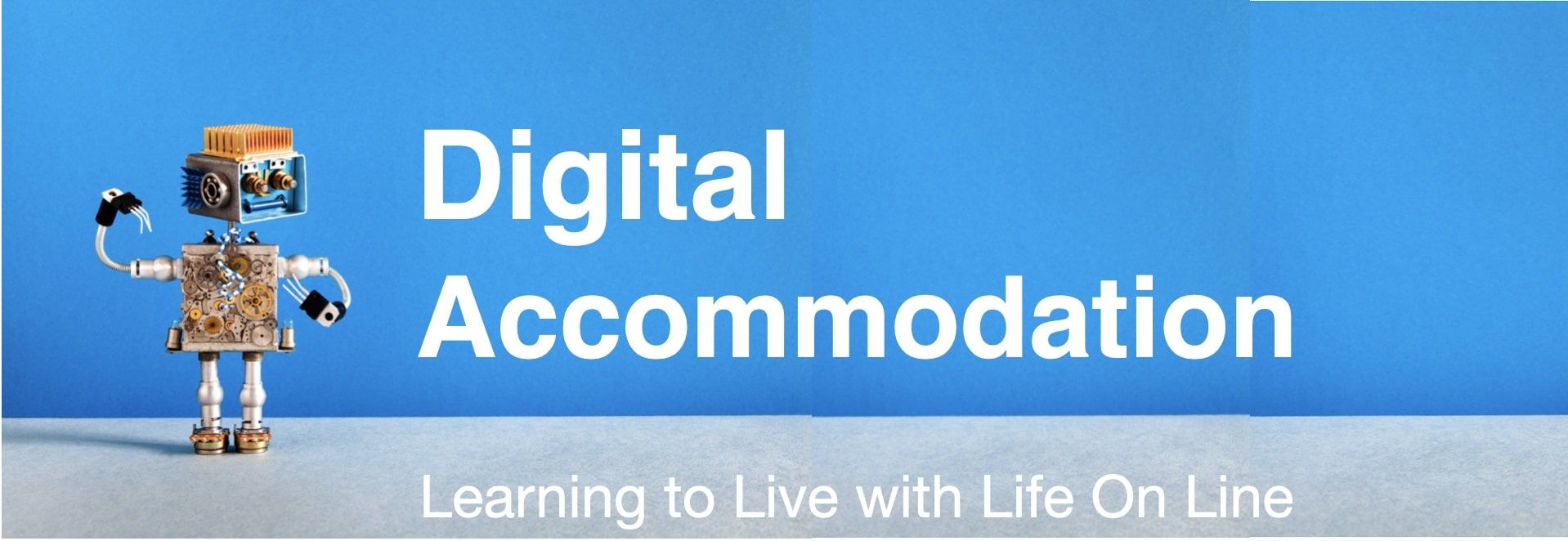
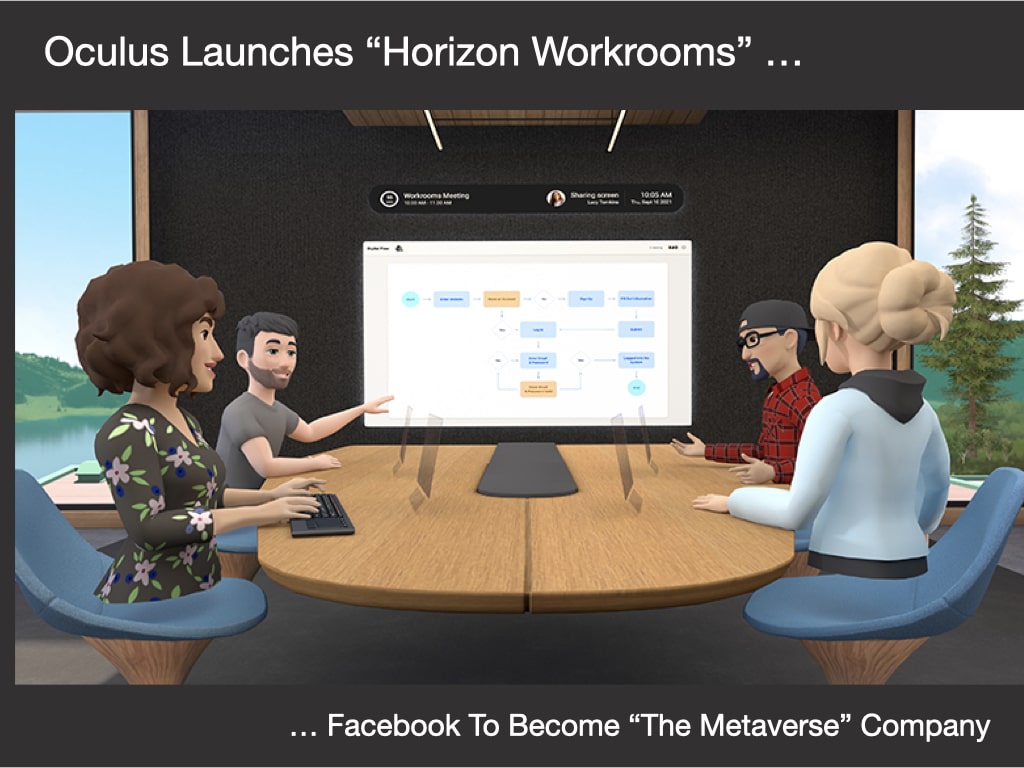
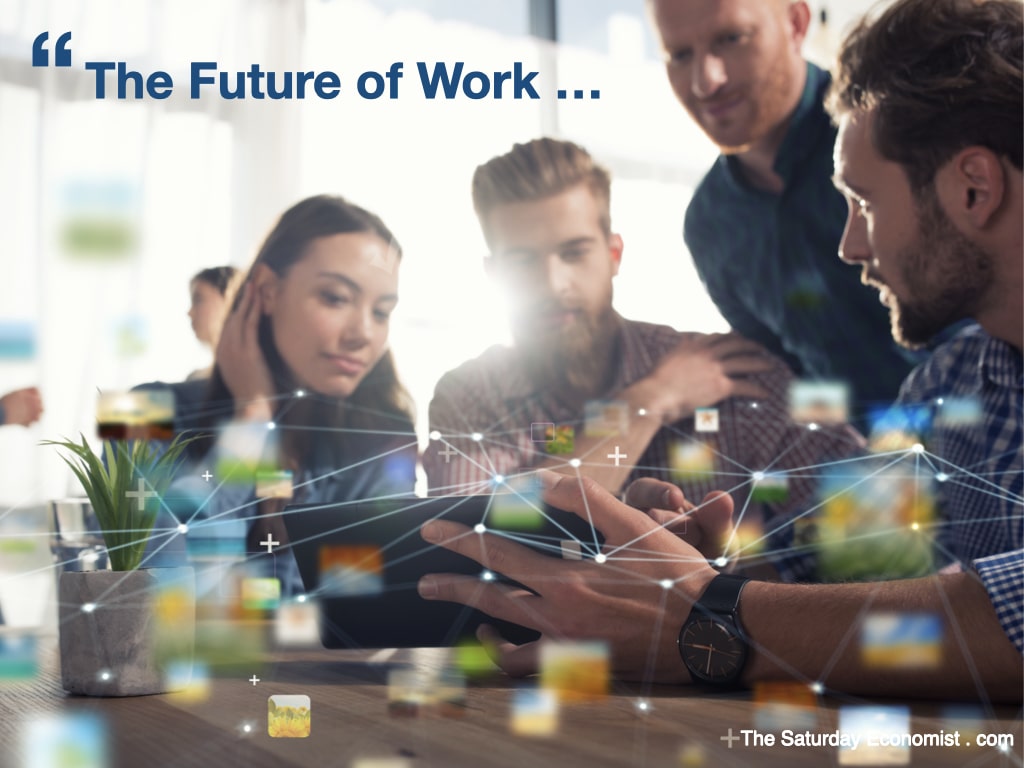
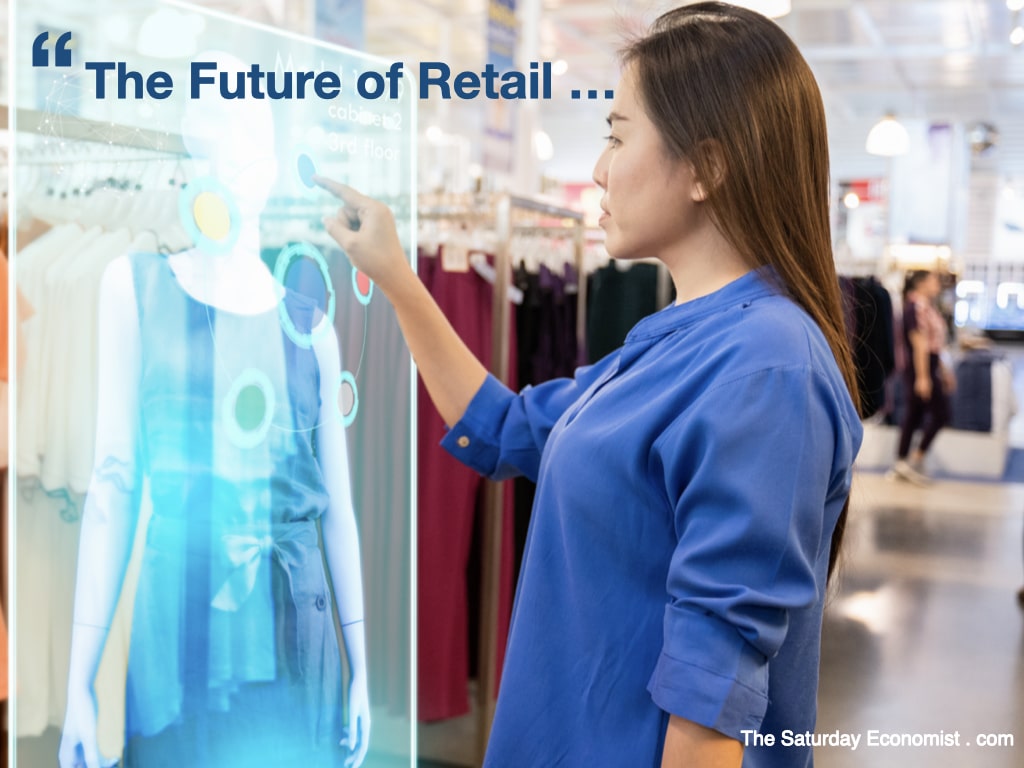
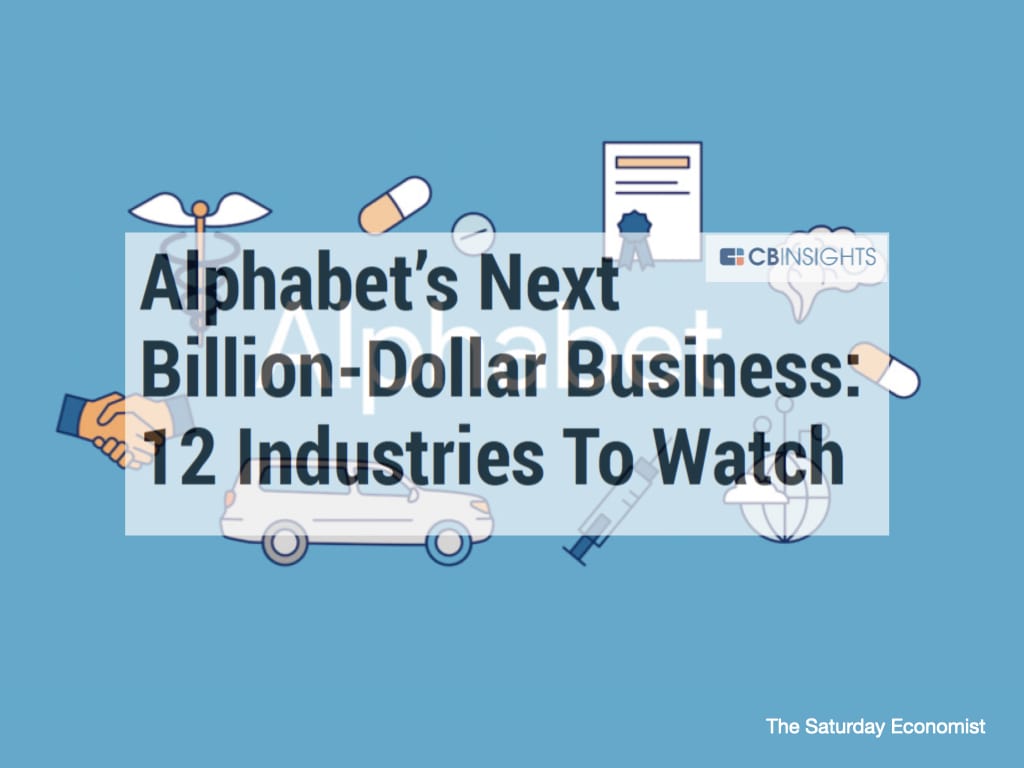
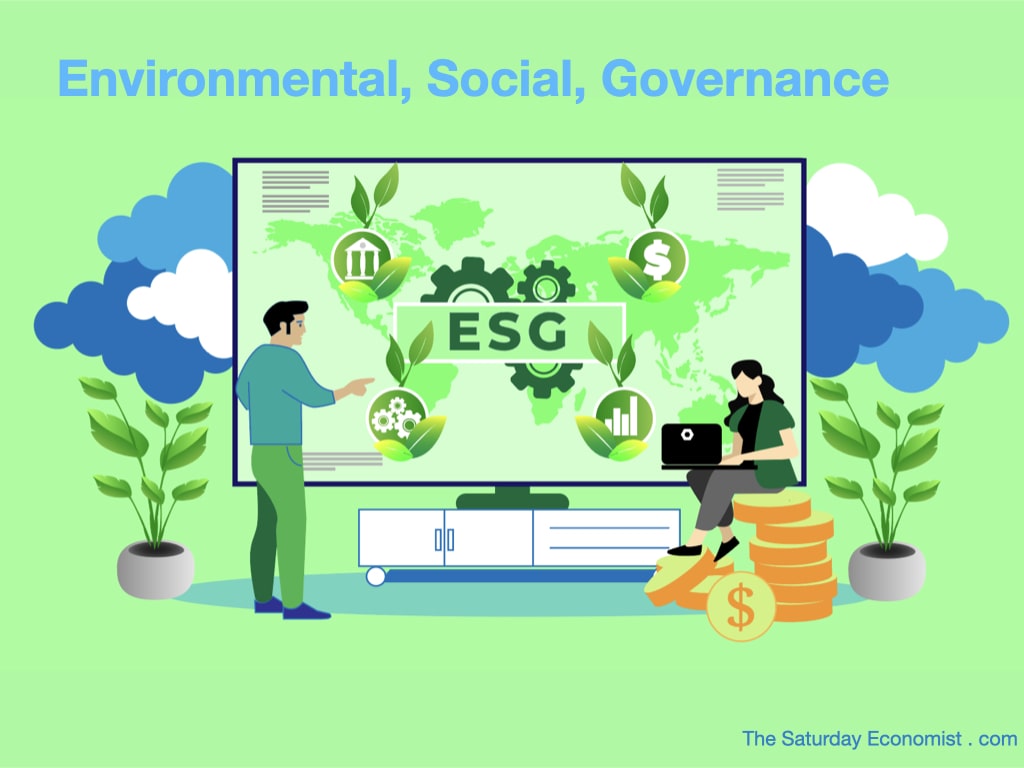

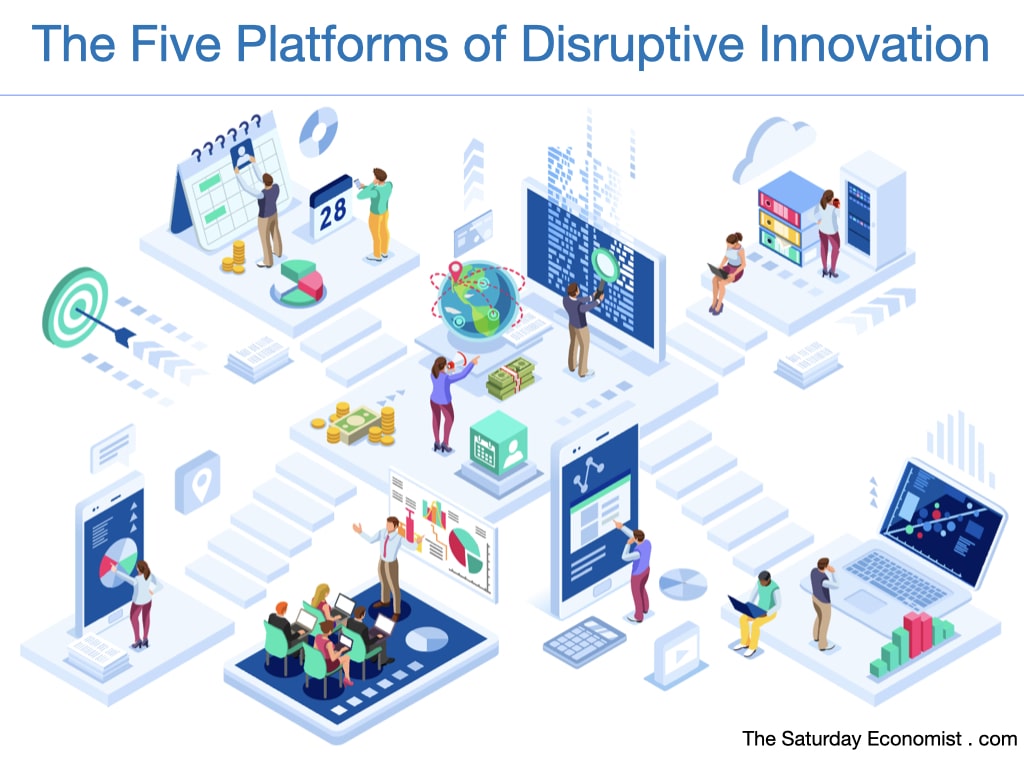
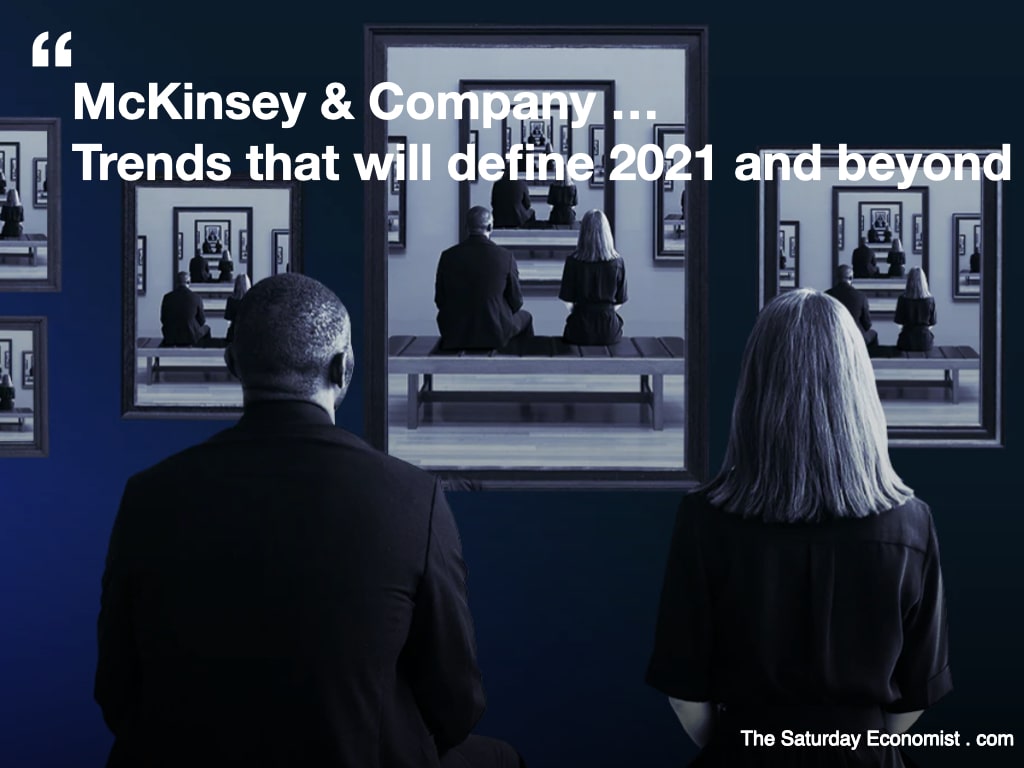
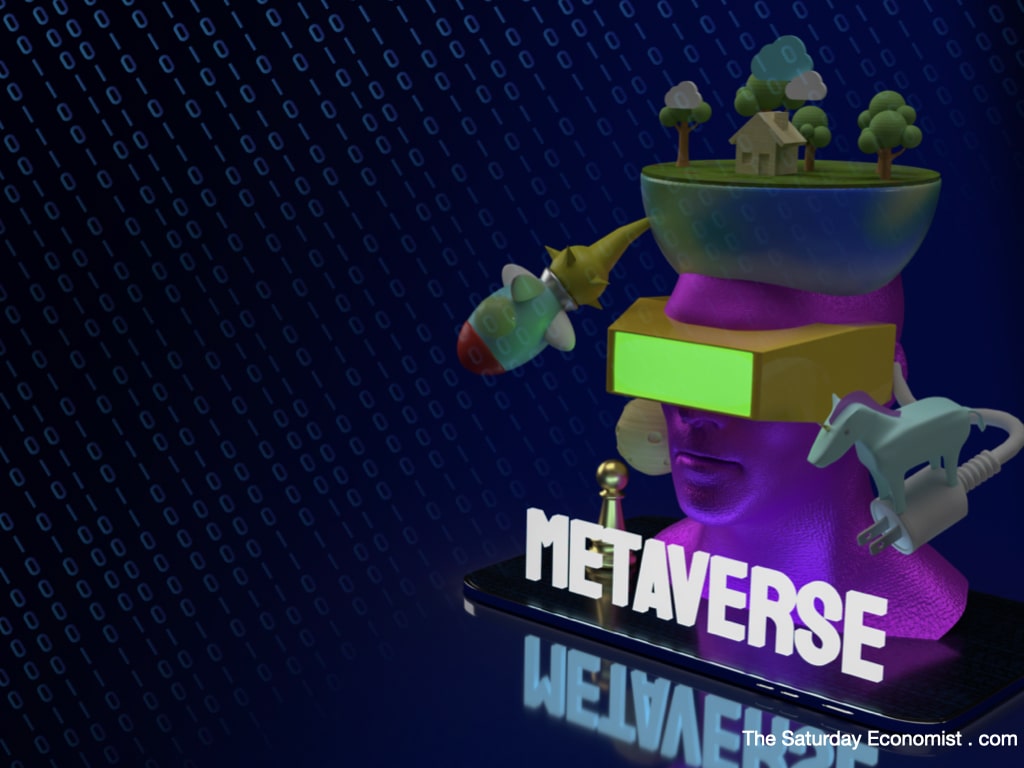
 RSS Feed
RSS Feed
